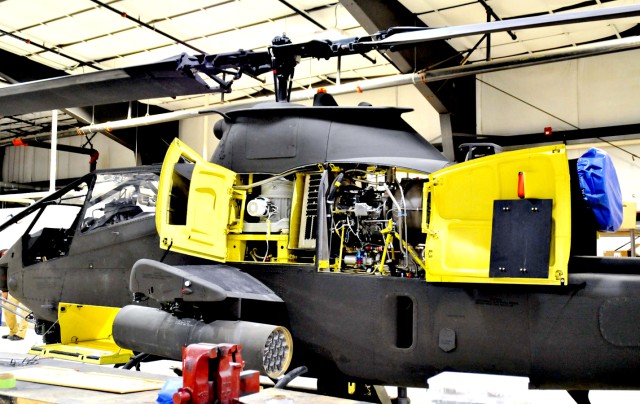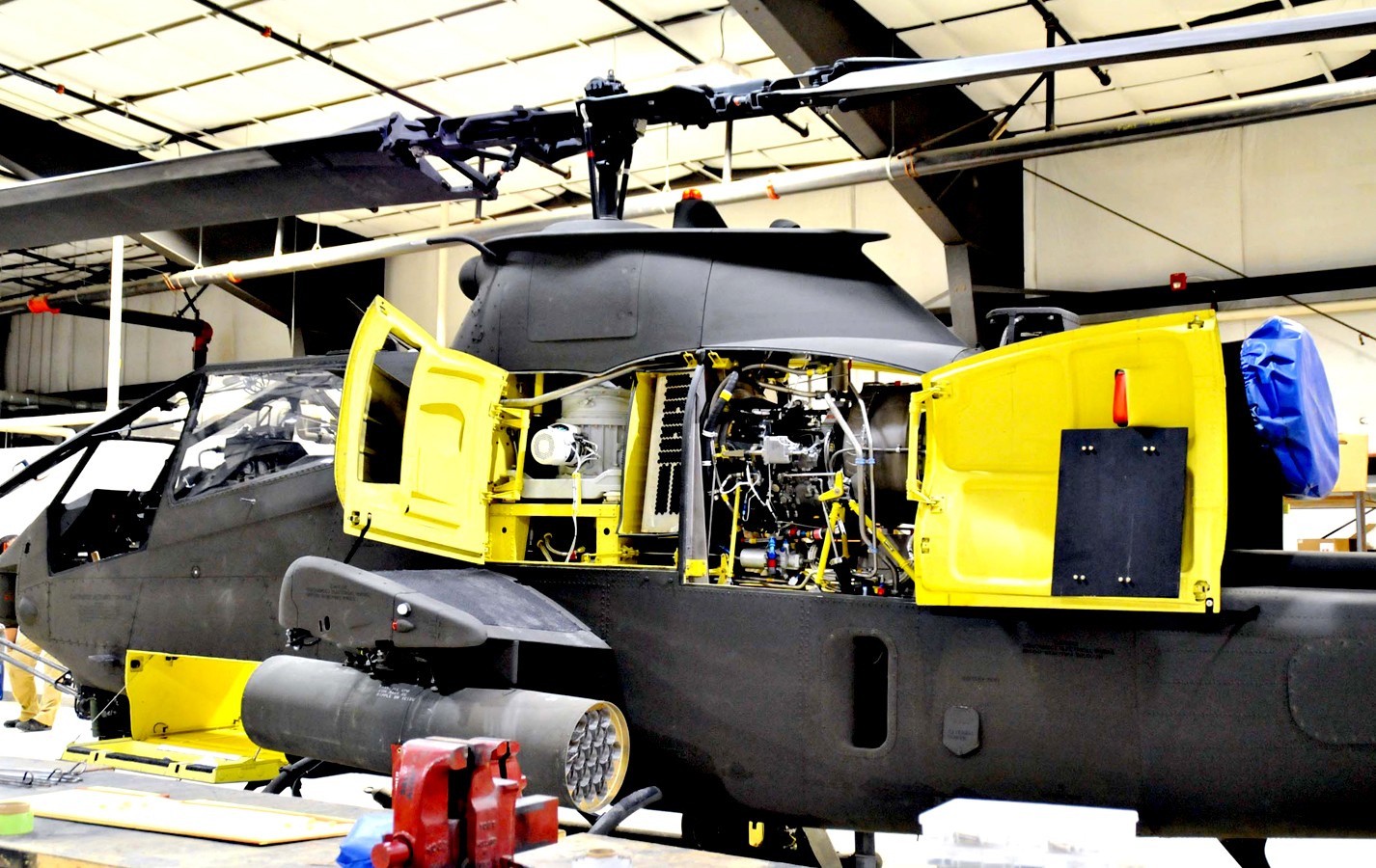
FORT DRUM, N.Y. -- A Fort Drum-based operation that brought in tens of millions of dollars for the Army by rebuilding and selling AH-1 Cobra helicopters is about to ship its last four aircraft, bringing a successful and profitable venture to a close.
About 10 years ago, every Cobra in the U.S. fleet began arriving at Fort Drum to be retired through the post's Foreign Military Sales shop near Wheeler-Sack Army Airfield. Some were gutted for parts and used as military training apparatus; most were refurbished here and sold to military customers overseas.
The last four refurbished helicopters head to the Royal Thai Air Force this winter, officially ending the Army's Cobra retirement program.
"The Army normally gave individual instructions to units to tell them how to get rid of aircraft," said Chuck Florence, a quality assurance representative who oversees the FMS program at the Directorate of Logistics' Aviation Logistics Management Division. "They used to take them to the DRMO (Defense Reutilization Management Office).
"(But) the program manager, who is in charge of the life cycle of the Cobra down at (Redstone Arsenal), Huntsville, Ala., said 'let's try something different.'"
Work on the Bell-manufactured Cobras at Fort Drum's FMS shop has been nothing short of total restoration.
Once a helicopter arrived, it was stripped of its parts, its fluids drained and paint blasted off. New wire harnesses were manufactured at Fort Drum and installed. Flight controls, generators, battery compartments and overhauled engines were located, purchased and mounted.
"As hard as it is to believe, there are parts that we got after (searching) online," Florence said. "It was very creative logistics."
Each restoration took roughly 5,500 man-hours to complete and nearly $1 million in parts and materials.
The rebuilt product is remarkable to see.
"This is how it would have looked when it came out of Bell back in the 1970s," Florence said of the four Cobras soon to depart for Thailand.
Todd Gibbs, a senior mechanic at the FMS shop, said he thinks the DS2 federal contractors here are the best in the business.
"I would bet my next paycheck that the best structural sheet metal mechanics on the East Coast are right here at Fort Drum," Gibbs said. "I only say that because I really do have a lot of pride in what we do."
It was because of those skills that 10th Combat Aviation Brigade recently sent the FMS shop two crashed OH-58D Kiowa Warrior helicopters.
"You generally wouldn't let a local ALMD do the repairs," Florence noted. "But because of our capabilities developed with the Cobra mission, they asked us to rebuild them instead of sending them to Bell."
The Army began phasing out the Cobra in 2000 to bring the Comanche and Apache attack helicopters online. The Cobra was discontinued in part because it did not fight well in the dark, it could not house the Hellfire missile and the Army did not want a third scout-attack helicopter, Florence said.
"They figured they would save on maintenance costs," he said. "The Cobra really was a very expensive aircraft to maintain."
Since the Vietnam War, the U.S. military's total inventory of AH-1 Cobras reached 469 units. When Col. William Gavora, Redstone Arsenal's Scout-Attack Helicopter Program manager, initiated the Cobra retirement program at Fort Drum in 2000, ALMD personnel here jumped into gear. Two lots near Wheeler-Sack Army Airfield were used to store incoming Cobras while four warehouses were erected to accommodate refurbishing shops and Cobra parts.
"(The Army) allotted $10.2 million for the retirement of the Cobras," Florence said. "In the end, it really didn't cost the Army anything."
The last Cobra was dropped off here six months after the terrorist attacks of 9/11. Most of them arrived with patriotic-styled graffiti, Florence said.
In addition to taking deliveries, Fort Drum's ALMD sent teams to units throughout the Army to inspect Cobras, inventory parts and tools, and bring them back to Fort Drum.
Eventually, hundreds of aircraft were refurbished. They were purchased by nations such as Jordan, Bahrain and Turkey. More than $75 million worth in parts were sold to the Marine Corps. Israel bought more than 100 airframes.
Some Cobras were outfitted to fight forest fires and were sold to the U.S. Forest Service as well as state forestry agencies in Florida, Montana and Washington.
Still others were custom-designed and sold as static displays to veterans' organizations nationwide, including helicopters at the Marine Corps League in Lowville and the VFW in Sackets Harbor.
"It's hard to believe it is 11 years that this program has been going," Florence said.
"This is the end of an era. What happened here is a large chunk of Fort Drum history."
Related Links:
AH-1 Cobra retirement program at Fort Drum ends; final four helicopters head to Thailand

Social Sharing